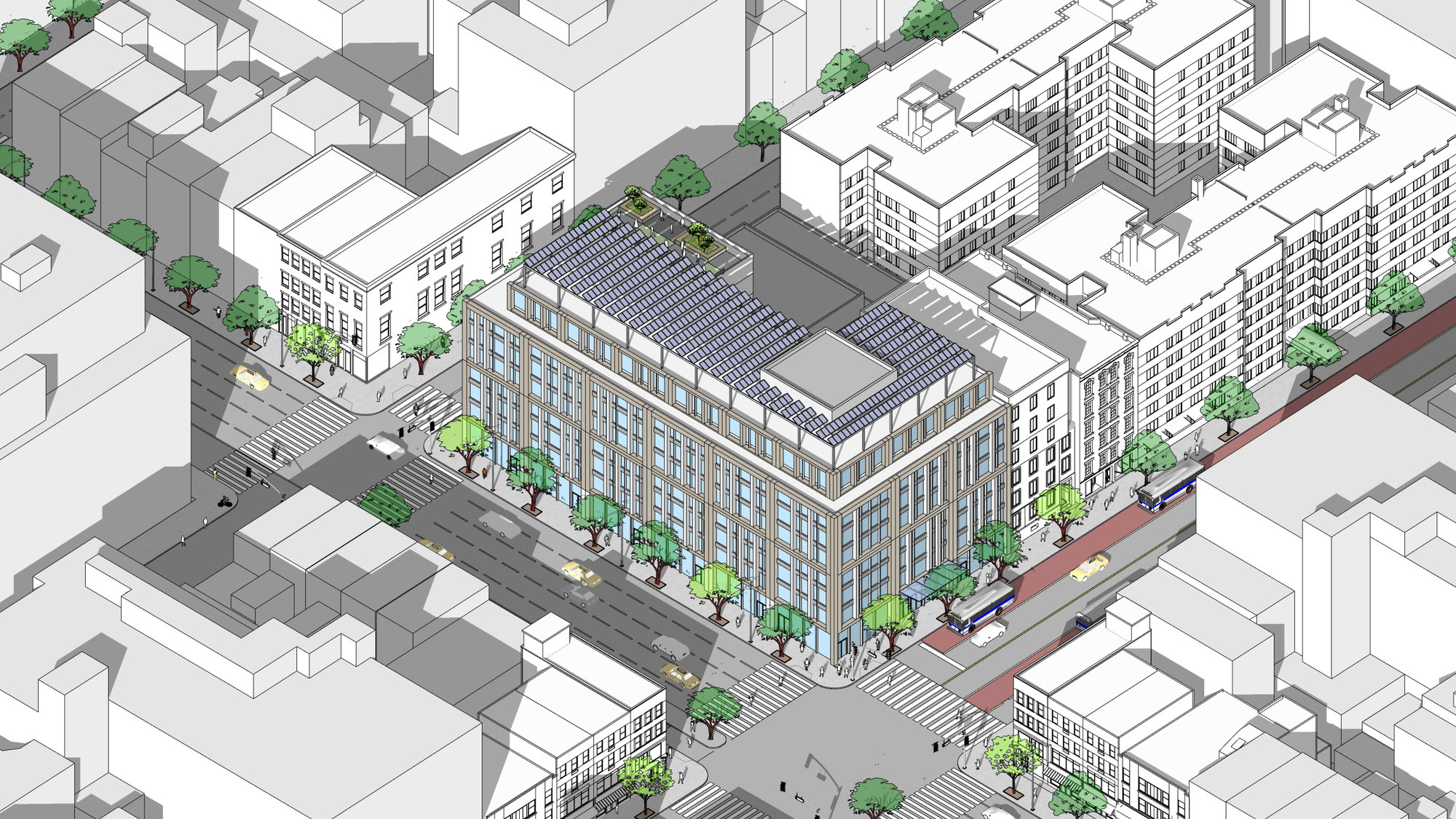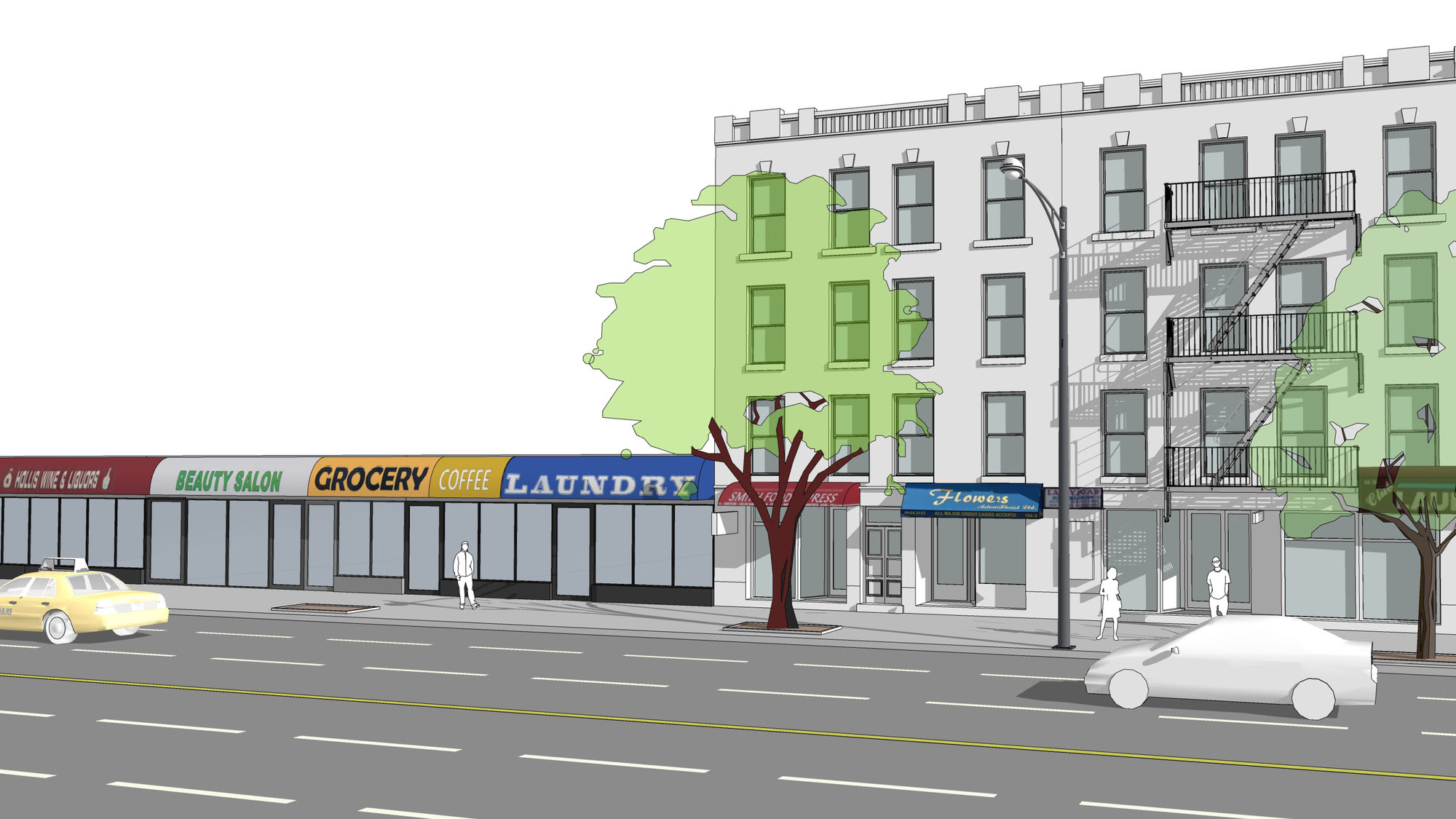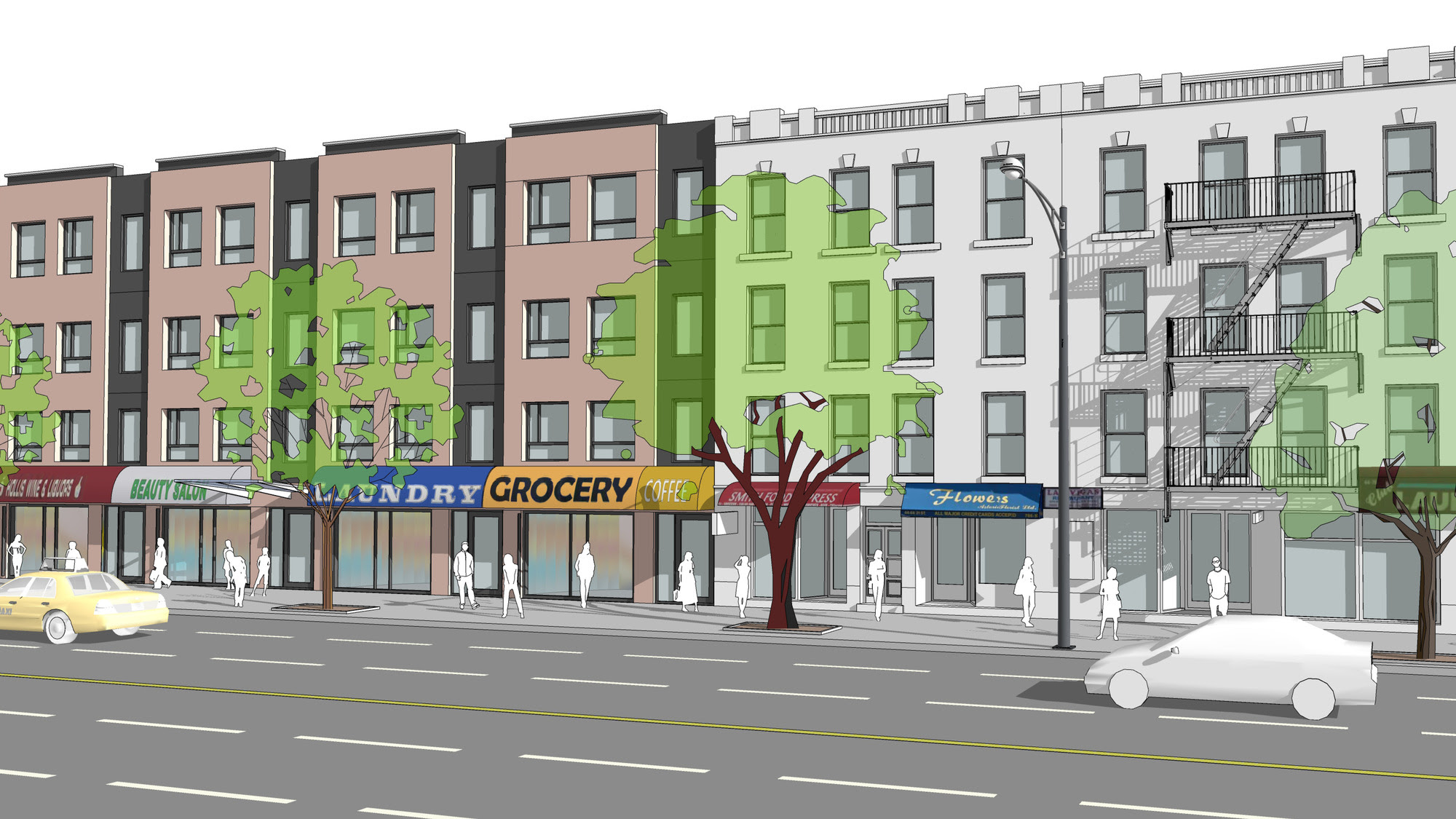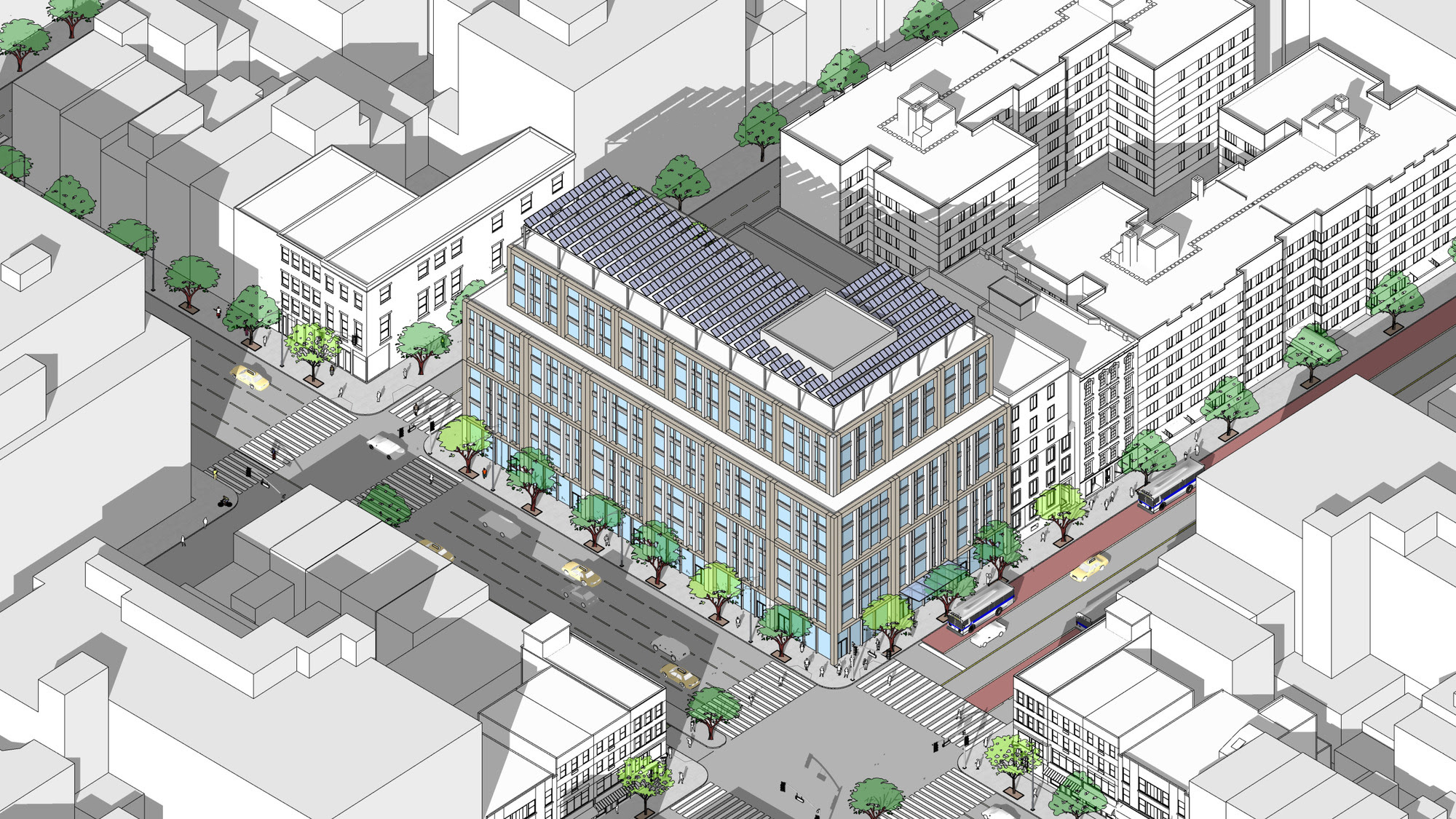Most Significant Pro-Housing Reform Ever to City Zoning, “City of Yes for Housing Opportunity” Would Create an Additional 100,000 Homes for 250,000+ New Yorkers
Severe Housing Shortage Has Driven Up Rents and Shelter Populations, Made City Increasingly Unaffordable for Working People
Plan Would Allow Creation of Homes Instead of Parking Spots, Create Additional Affordable and Supportive Homes, Eliminate Exclusionary Zoning, Enable Conversions of Empty Offices to Homes
Follows Adams Administration’s Record-Breaking Year for Creating Affordable Housing and Moving New Yorkers From Shelter Into Permanent Homes
New York City Mayor Eric Adams today launched an urgent, groundbreaking effort to tackle the city’s persistent and severe housing shortage and enduring affordability crisis by enabling the creation of “a little more housing in every neighborhood” — making New York a city that working people can once again afford to live in. As the lack of available homes drives up rents and pushes more New Yorkers into the shelter system, Mayor Adams’ “City of Yes for Housing Opportunity” proposal would help the New Yorkers who have built this city afford to stay here and raise their families here by creating an additional 100,000 homes — enough to support more than 250,000 New Yorkers, roughly the entire population of Buffalo, N.Y. — over 15 years and more than 250,000 family-sustaining jobs. The steps Mayor Adams is proposing today would be the most significant pro-housing reforms ever to the city’s zoning code and a critical step towards Mayor Adams’ “moonshot” goal of delivering 500,000 new homes to New Yorkers over the next decade.
This new initiative represents the third of three citywide zoning changes that will be presented to all five borough presidents, all 59 community boards, and the New York City Council as part of Mayor Adams’ vision for New York City as an inclusive, equitable “City of Yes.” As the majority of New Yorkers spend more than one-third of their income on rent, and fewer than 1 percent of apartments listed under $1,500 monthly rent are available for new tenants, the City of Yes for Housing Opportunity marks the first time a mayoral administration has proposed unlocking more housing on a citywide basis — offering a roadmap for every community to do its part to address this citywide crisis. The plan includes measures to eliminate mandates that parking spaces be constructed with new homes, create additional affordable and supportive housing, eliminate bans on apartments across the city, and enable conversions of empty office buildings into homes for New Yorkers.
“So many of the challenges we face as a city are rooted in an ongoing housing shortage that is forcing too many people to leave New York City and making life increasingly difficult for those who stay. For more than 60 years, we have added layers upon layers of regulations, effectively outlawing the kinds of housing that our city has long relied on. Today, we are proposing the most pro-housing changes in the history of New York City’s modern zoning code — changes that will remove longstanding barriers to opportunity, finally end exclusionary zoning, cut red tape, and transform our city from the ground up,” said Mayor Adams. “This plan will spur an additional 100,000 new homes for a quarter-million New Yorkers. If we do this right, decades from now, New Yorkers will see this moment for what it was: a turning point away from exclusionary policies and outdated ideas and towards a brighter, bolder, more equitable future — the moment when we came together and decided to be a ‘City of Yes.’”
“Our housing crisis is severe, and this landmark proposal meets the moment with the most sweeping pro-housing changes in the history of our zoning code,” said Deputy Mayor for Housing, Economic Development, and Workforce Maria Torres-Springer. “At its root, this plan is driven by a simple insight: To solve our housing shortage, we need to build more homes. Building is essential to our future as a city where working families can live and thrive and to our status as an economic and cultural capital. Recognizing that the time for tinkering is over, Mayor Adams has put forth a visionary and courageous plan to dismantle exclusionary zoning, make New York City more affordable, and tackle this crisis head-on.”
“Our goal is to create ‘a little more housing in every neighborhood’ to finally tackle New York’s housing shortage head-on,” said New York City Department of City Planning (DCP) Director Dan Garodnick. “By addressing the root cause of New York’s high housing costs, displacement, homelessness, and the imbalance of power between tenants and landlords, we can build a city where working families can thrive. These critical and urgently needed changes will not just create the housing that New Yorkers need — they’ll also help foster vibrant communities where New Yorkers have easy access to transit and services, support multigenerational families, and deliver good-paying jobs and a greener city.”
“City of Yes is the bold action we sorely need. Without the City of Yes, we won’t successfully tackle the housing crisis that continues to be a drag on our city’s potential,” said New York City Department of Housing Preservation and Development (HPD) Commissioner Adolfo Carrión Jr. “This isn't a hypothetical. Young families, older adults, all working people, those experiencing homelessness, people on fixed incomes — everyone is trying to build a better life for themselves but affording to live in New York City has become almost untenable for too many. HPD and DCP are on the front lines of the city’s fight to tackle the housing crisis, and we’re doubling down. It’s time to say ‘Yes, we’re all in this together.’”
“It is essential that New Yorkers throughout the five boroughs can afford to remain here, and the best way to do that is by building more housing that is accessible for all,” said New York City Economic Development Corporation President and CEO Andrew Kimball. “This is a bold vision set forth by Mayor Adams that not only addresses the near-term challenges in front of us but also continues to build off administration-wide efforts towards the mayor’s housing moonshot. Keeping housing attainable and affordable is necessary for building a vibrant, inclusive, and globally competitive economy for all New Yorkers.”
“With NYCHA residents accounting for one in every 17 New Yorkers, we know that the creation of housing in our city is of critical importance,” said New York City Housing Authority (NYCHA) CEO Lisa Bova-Hiatt. “The ‘City of Yes for Housing Opportunity’ proposal will help create an abundance of housing for New Yorkers for years to come, with an emphasis on bringing permanently affordable homes to neighborhoods across the five boroughs.”
For decades, increasingly complex and restrictive zoning has impeded the creation of new housing and magnified inequities among communities across the city, with just a few neighborhoods producing the majority of the city’s new homes and some neighborhoods even losing homes overall. As the city has continued to create jobs and attract new arrivals, new housing production has slowed to a crawl — from an average of nearly 37,000 new homes approved every year in the 1960s to barely 8,000 annually in the 1990s and, most recently, approximately 20,000 homes approved each year in the 2010s. The proposed zoning changes in Mayor Adams’ City of Yes for Housing Opportunity will reverse those trends and unlock much-needed new housing in every neighborhood across the city.
These steps also build on the Adams administration’s record-breaking efforts in Fiscal Year 2023, producing the most new supportive homes and homes for New Yorkers formerly experiencing homelessness ever in the city, creating the second-most new affordable homes in one year, and connecting more New Yorkers to permanent homes with City Fighting Homelessness and Eviction Prevention Supplement (FHEPS) housing vouchers than ever in the program’s history.
The City of Yes for Housing Opportunity plan could add 100,000 homes to expected housing production over the next 15 years, create nearly 260,000 temporary jobs and an additional 6,300 permanent jobs, and provide $58.2 billion in economic impact to the city over the next 30 years. The policies have been developed over the past year in close consultation with community partners, other stakeholders involved in creating housing, and local and national experts to draw on evidenced-based best practices to make housing more affordable, ease displacement pressures, and reverse segregation by race and income reinforced by centuries of housing policy.
Ending Parking Mandates for New Housing
Across much of New York City, decades-old regulations require certain fixed numbers of parking spaces to be built alongside new homes — driving up costs and ultimately blocking housing by making many projects infeasible. These government mandates add an estimated $67,500 per underground parking space in construction costs and require valuable space to be reserved for cars instead of additional homes for New Yorkers.
This proposal will eliminate requirements that new homes come with new parking spots. Parking would not be barred from new developments, but this plan would get zoning regulations out of the way so developers could make decisions consistent with the market and their potential residents.
Universal Affordability Preference
The Universal Affordability Preference policy would bring permanently affordable homes to neighborhoods citywide. Building on the successful Affordable Independent Residence for Seniors (AIRS) program — which allows affordable senior housing to be about 20 percent larger than other types of housing — this policy would extend that preference to all types of affordable housing. Had Universal Affordability Preference been in place since 2014, New Yorkers could have benefitted from an additional 20,000 income-restricted homes where an additional 20,000 New York City families would be guaranteed to spend no more than 30 percent of their income on rent.

Demonstration of how the Universal Affordability Preference policy could allow for the creation of more rent-restricted homes. Credit: New York City Department of City Planning
Shared Living
Around the world, cities have lowered housing costs by allowing modest apartments where residents share some common facilities, like kitchens and bathrooms. New York was once full of options like these — but, over time, regulations have made this kind of housing all but impossible to offer. This proposal would adjust current rules that mandate larger unit sizes, allow more smaller-sized apartments to reduce the need for single adults to live with roommates, and re-legalize homes with shared kitchen or bathroom facilities while maintaining strong building code and livability standards.
Town Center “Main Streets” Zoning
Increasingly restrictive zoning has made it illegal to construct the kinds of commercial corridors that make neighborhoods across New York City vibrant and distinct. Along these corridors, the “town centers,” or “Main Streets” of respective communities, this proposal would allow between two and four stories of residential development over ground-floor commercial space to encourage mixed-use communities and foster naturally affordable types of housing.


Commercial corridor without (left) and with (right) town center “main streets” zoning. Credit: New York City Department of City Planning
Transit-Oriented Development
Connecting new housing to accessible public transportation can ease congestion, cut harmful carbon emissions, and reduce car ownership — fostering a safer, cleaner, and more prosperous city. But in many parts of New York, current zoning forbids even modest apartment buildings. This proposal would allow apartment buildings between three and five stories on large lots near transit stops in places where they will blend with the existing neighborhood. These small multifamily buildings are already a part of New York’s fabric — making up more than one in five homes in one- and two-family neighborhoods — but have been banned by increasingly restrictive zoning in recent decades.
Accessory Dwelling Units
Backyard cottages, garage conversions, and basement units have delivered enormous benefits to homeowners across the country — allowing seniors struggling to stay in their neighborhood on a fixed income or young people stretching to afford a first home a way to earn extra income. This proposal would legalize an additional dwelling unit of up to 800 square feet on one- and two-family properties across the five boroughs, adding new housing that fits into neighborhoods, while providing space for multigenerational families, health aides, or local workers.
Example of an accessory dwelling unit. Credit: New York City Department of City Planning
Converting Empty Offices into Housing
Turning vacant commercial space into homes offers a win-win for New Yorkers looking for new homes and the city’s economic recovery — creating housing more efficiently in already-existing buildings, while maximizing use of otherwise-underused space and enlivening neighborhoods. Today, arbitrary restrictions dictate that depending on the year a building was constructed, conversion may or may not be possible today. This proposal would update the year of construction to 1990 for flexible conversion regulations, extend geographic eligibility to anywhere in the city that zoning permits housing, and allow conversion to more types of homes, including supportive housing. Through these changes, commercial space could be converted to create an additional 20,000 homes over the next decade.
Maximizing Campuses
Large campuses across the city have underused space that could be used to house New Yorkers. The creation of new homes could fund repairs to existing buildings, revitalize institutions, and help address the city’s housing crisis. But complex and outdated rules stop campuses from adding new buildings if, for example, an older building is above a height limit — even if the older building is allowed under the rules in place when it was built. This proposal would ease approvals for new buildings on campuses that reflect the context of the surrounding buildings — allowing properties ranging from multi-building housing developments to religious institutions to create new housing and support the revitalization of their communities.

Demonstration of maximizing space on campuses to create new housing and support community revitalization. Credit: New York City Department of City Planning
In addition to these significant changes, the City of Yes for Housing Opportunity plan includes additional measures to improve and modernize New York City’s zoning, including allowing greater flexibility for homeowners to add extra space or bring existing properties into compliance with zoning to facilitate renovations; ending the “Sliver Law,” which limits development based on the size of a property for height-limited developments; and more easily allowing landmarked sites to sell transferable development rights, allowing them to better raise revenue for maintenance of the landmarked building.
Next week, DCP will release a draft scope of work for the City of Yes for Housing Opportunity and early documentation in the environmental review process, as well as host a virtual public information session where the public can learn more and ask questions about the proposal. The draft scope of work will be followed by a scoping meeting, where the public can weigh in on the environmental review.
The text amendment is expected to begin the formal public review process in spring 2024. Following consideration and recommendations by all five borough presidents, all five borough boards, and all 59 community boards, the initiative will be voted upon by the City Planning Commission and the City Council in fall 2024.



No comments:
Post a Comment